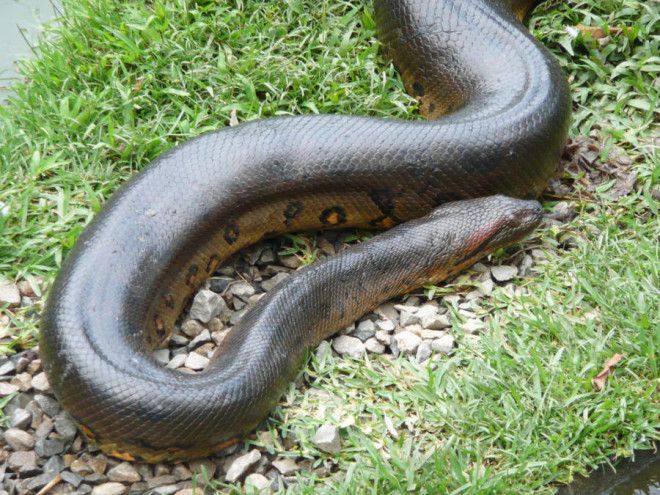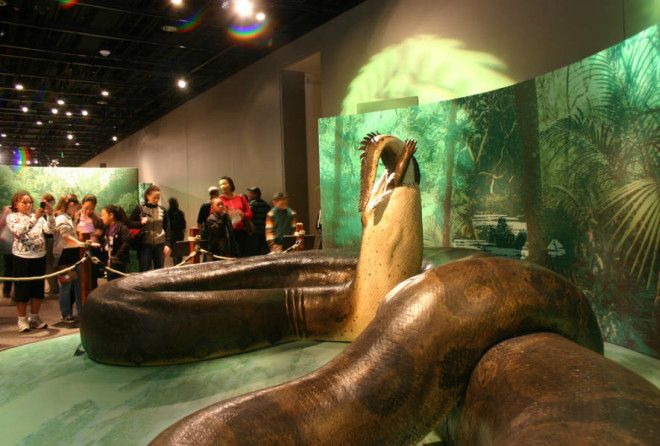Titanoboa thrived in the tropical jungles of South America some five million years after the extinction of the dinosaurs. After the dinosaurs were wiped out, there was a vacuum at the top of the food chain. Titanoboa gladly stepped up.
The prehistoric species of snake grew up to 50 feet long and weighed as much as 2,500 pounds. That’s as long as a semitrailer you see on highways and about twice as heavy as a polar bear. At its widest point, Titanoboa was three feet wide, which is more than a human arm is long.
If you had the horrifying experience of staring into Titanoboa’s mouth, the snake could swallow you whole. It could kill you before you could even scream.

Scientists found a nearly intact set of bones that belonged to a Titanoboa’s skull deep in a Colombian coal mine in 2011. You wouldn’t think a dusty, worn out trail of coal mines in northern Colombia would harbor such a giant snake skull, but the coal deposits come from the remains of ancient life forms crushed under the weight of Earth’s crust.
The area that is now Colombia was mostly below sea level. It was hot, humid and saw plenty of rain. Titanoboa fit right in with its brown skin that camouflaged it perfectly in muddy waters. The snake found by scientists likely got caught in a mud slide that buried it. Millions of years and dozens of feet of rock later, the skull became part of rich coal fields.
To demonstrate just how big Titanoboa could get, the Smithsonian set up an exhibit in Grand Central Station in New York in 2012. The mockup featured a gargantuan snake swallowing what looked like a crocodile with its tail hanging out of the snake’s mouth.
It suffices to say the model got people’s attention. It was a good publicity stunt ahead of a Smithsonian Channel special on the spectacularly rare find. The goal of the exhibit was to show just how large prehistoric creatures could get compared to today.

Titanoboa simply has no equal among modern snakes. Despite its name, it probably didn’t squeeze its prey to death. It relied on ambush hunting, much like a crocodile, where Titanoboa struck quickly and fiercely.
Until Titanoboa’s discovery, the largest snake fossil ever found came in at 33 feet and weighed 1,000 pounds. That was Gigantophis, a snake that lived 20 million years ago in Africa.
The largest snake species today is the giant anaconda, and it averages around 15 feet long, or less than one-third the size of your average Titanoboa. Anacondas rarely reach more than 20 feet long and weigh more than 500 pounds. These contemporary giants, which are terrifying enough to see in the wild, pale in comparison to the size of their long-dead ancestors.

